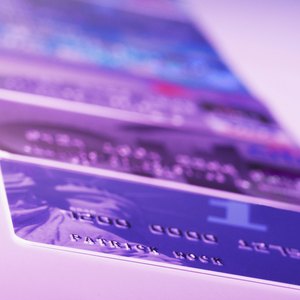
Imagine that while you're traveling with your friends, you reach in your back pocket and find that your wallet isn't there. Because you were responsible, you have an emergency list of your credit card numbers and their customer service phone numbers, and start calling the card issuers to let them know that your credit cards were stolen. One phone number doesn't work, though. As long as you have your credit card number, however, you're not out of luck because you can figure out who the issuer is from the number.
Credit Card Numbering Systems
Credit card numbers aren't assigned at random. Standard 7812, issued by the International Organization for Standardization/International Electrotechnical Commission, defines how credit card numbers work. According to the standard, the first six digits identify the type of card and the company that issued it. This six-digit number is known as an issuer identification number or a bank identification number.
Issuer Identification Number
In the U.S., the official list of issuer identification numbers is maintained by the American Bankers Association. The ABA will only release its database to you if you meet its special qualifications. However, third party companies also offer look-up services. With these services, you enter the six-digit code and get the name of the issuing bank. You might even get the customer service number as a part of your inquiry, making it easy for you to contact the card issuer.
Identifying Card Types
You can usually identify the type of card from the first digit or two. Visa cards always start with a four, while MasterCard credit cards start with numbers between 51 and 55. Cards starting with a three are either American Express, which start with 34 or 37; Japan Credit Bureau (35); or Diner's Club, which starts with a 36 or 38. Discover cards start with 6011 or 65. This information is why some e-commerce websites don't have to ask you what kind of card you have -- they can tell from the first couple of digits. You can use the Bin Database, BinDB.com, to look up card issuers using numbers.
The Last Digit
The last digit of a credit card number is also important. It can tell you or a credit card processing system whether or not the credit card number is real. Called a check digit, it uses a mathematical process to encode the credit card's number in such a way that if there is an error, like if you enter the card number as 4182 instead of 4128, there is a 90 percent chance that it will be caught. This helps to both prevent entry errors, as well as deter fraud.
References
- DataGenetics: Credit Cards
- American National Standards Institute. "ISO Announces Updates to the Issuer Identification Number (IIN) Standard." Accessed April 28, 2020.
- Motus Financial. "Preparing for Mastercard's 2-Series Credit Cards." Accessed April 28, 2020.
- Braintree. "Supporting New Mastercard 2-Series BINs." Accessed April 28, 2020.
- Visa. "Numerics Initiative: Reinforcing the Importance of Smart BIN Management Policies." Accessed April 28, 2020.
- Data Genetics. "Credit Cards." Accessed April 28, 2020.
- Experian. "What Is a CVV Number on a Credit Card?" Accessed April 28, 2020.
- Fiserv. "What Is an NFC Payment?" Accessed April 28, 2020.
- Dharma Merchant Services. "What Is Credit Card Tokenization?" Accessed April 28, 2020.
- Changing Seasons Federal Credit Union. "EMV Brings Powerful Security for Every Transaction." Accessed April 28, 2020.
Resources
Writer Bio
Steve Lander has been a writer since 1996, with experience in the fields of financial services, real estate and technology. His work has appeared in trade publications such as the "Minnesota Real Estate Journal" and "Minnesota Multi-Housing Association Advocate." Lander holds a Bachelor of Arts in political science from Columbia University.

